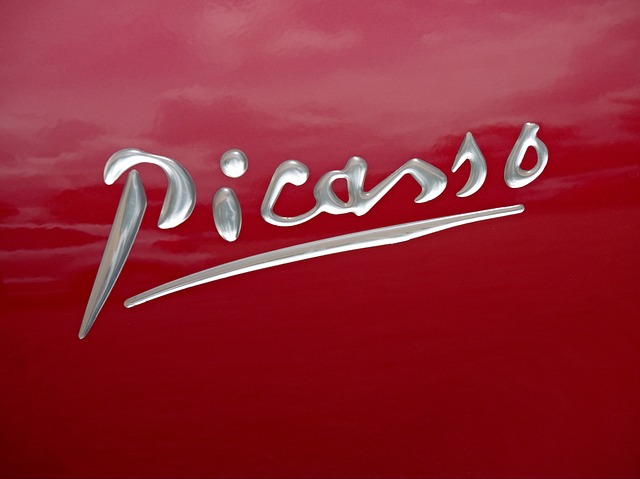
Searching for Clarity in Trump v. CASA, Inc.
08.22.2025 | Linda J. Rosenthal, JD

We have a long-running series here on the FPLG blog called Charities in the Courtroom. One of our aims is pushing back against the widespread misconception that the nation’s nonprofit organizations need be concerned and know only about federal tax-exemption law.
To that end, we select (for this special series as well as for stand-alone blog posts) real-world examples that showcase the broad range of legal actions that are brought by the nation’s 501(c)(3)s or against them.
America’s art museums, for instance, are certainly no strangers at their local courthouses. They regularly litigate many routine matters and also deal with high-profile disputes. See, for instance, Nonprofits & Labor Unions: A Crossroads (October 6, 2022) [worker disputes last year at the Philadelphia Museum of Art and other institutions]. See also our discussions in recent years about the backlash against many museums’ controversial decisions to sell off pieces from their collections to raise money: Deaccession Wars Rage On For American Museums (April 8, 2021).
A new lawsuit just popped up on January 20, 2023, in New York state court, and is already grabbing considerable attention from the major national media as well as arts publications.
It’s about a painting called Woman Ironing, created by Pablo Picasso in 1904 during his Blue Period. Considered a masterpiece – and currently valued between $100-$200 million – it has been prominently featured since about 1978 in the Thannhauser Gallery of the Solomon R. Guggenheim Museum.
In 1916, a wealthy German-Jewish industrialist bought the artwork from one of Munich’s leading galleries. But two decades later came The Nuremberg Laws and Kristallnacht and the existential threat to Jewish lives and property growing daily.
This case is a perfect candidate as the latest entry in the Charities in the Courtroom lineup. It highlights how and why even the most prestigious arts institutions around the world continue to be ensnared, so many decades after the end of the Second World War, in contentious and complicated ownership and possession battles over art treasures.
“The restitution of art stolen or sold under duress during the Nazi regime continues to be a hot-button issue….” for museums and galleries, wrote arts reporter Sarah Cascone in 2015. See also, a 2020 Harvard Law Review case note: “Among the countless crimes of Nazi Germany were the theft, looting, and forced sale of hundreds of thousands of artworks. Many owners never recovered these works, and restitution claims continue to occupy the dockets of American (and foreign) courts.”
“The heirs of a German Jewish collector persecuted during World War II are taking legal action to recover a painting by Pablo Picasso that now is locate at the Guggenheim Museum in New York. The descendants believe the painting is worth up to $200 million.” Heirs Sue Guggenheim to Recover Storied Picasso Painting, Citing ‘Wrongful Possession’ (January 23, 2023) Angelica Villa, artnews.com.
“The museum says the painting’s owner, who sold it after fleeing Nazi Germany, made a ‘fair transaction.’ His heirs say he sold under duress.” Jewish Heirs Sue Guggenheim Over Ownership of a Prized Picasso (January 29, 2023) Matt Stevens, The New York Times.
See also: A Jewish family fleeing the Nazis sold a Picasso in 1938. Their heirs want it back (January 25, 2023) Toyin Owoseje, CNN.com; Jewish heirs of owner who fled Nazis sue Guggenheim Museum for $200 million Picasso (January 30, 2023) Times of Israel; Heir of a German-Jewish Collector Is Suing the Guggenheim for the Return of a Prized Picasso Painting—Or $150 Million (January 23, 2023) Taylor Dafoe, news.artnet.com; and A Jewish family sold a Picasso to flee Nazis. Their heirs want it back. (January 25, 2023) Daniel Wu, The Washington Post.
A simple Google search – already, not quite two weeks after the Complaint was filed – turns up many more articles by major national news sources as well as arts publications.
Why?
Yes, it involves a major museum and a valuable art treasure, but there are notably head-scratching details including: (1) it’s been over 70 years since World War II; (2) the painting’s whereabouts have been well known for decades; and (3) this art treasure was not “stolen” or taken directly by the Nazis.
This case is certainly starting off with a bang. It will be intriguing to follow as it develops, not least because – at key points in the decades-long journey of Woman Ironing from Munich to New York – the name Thannhauser keeps popping up.
That name shows up, too, in entirely separate lawsuits, over a number of years, involving other art treasures surrendered at “fire sale” prices by the owners fleeing Nazi persecution.
The plot thickens.
In tomorrow’s Part Two, we’ll dip more into the specifics of what is known or suspected already (even at this early pleading phase) of this tale that began during World War I with successful businessman Karl Adler buying Picasso’s Woman Ironing from prestigious art dealer Heinrich Thannhauser.
An eventual win or loss in this 2023 litigation can turn on even a single piece of the relevant – and decades-long – evidence pie.
For instance, it’s been suggested that since the Thannhauser family were also Jewish (and had to be concerned about getting themselves and their property out of Germany), their 1938 buy-back of the Picasso painting even at a greatly depressed price does not make a transaction of duress. “The museum claims that Adler’s sale of the painting to [Heinrich’s son, Justin] Thannhauser was “a fair transaction between parties with a longstanding and continuing relationship.”
But arts reporter Angelica Villa points out: “It is not the first time the [Guggenheim] has dealt with a legal battle over art linked to Thannhauser. In 2009 the museum settled with the heirs of another persecuted collecting family over the Picasso painting Le Moulin de la Galette; the family claimed Thannhauser acquired it as a ‘product of economic duress.’”
We’ll start the follow-up post by dealing with the elephant in the room: The Second World War ended almost eighty years ago.
Why haven’t claims about the “theft, looting, and forced sale of hundreds of thousands of artworks” long ago been barred by a statute of limitations or other time-related defense?
– Linda J. Rosenthal, J.D., FPLG Information & Research Director
